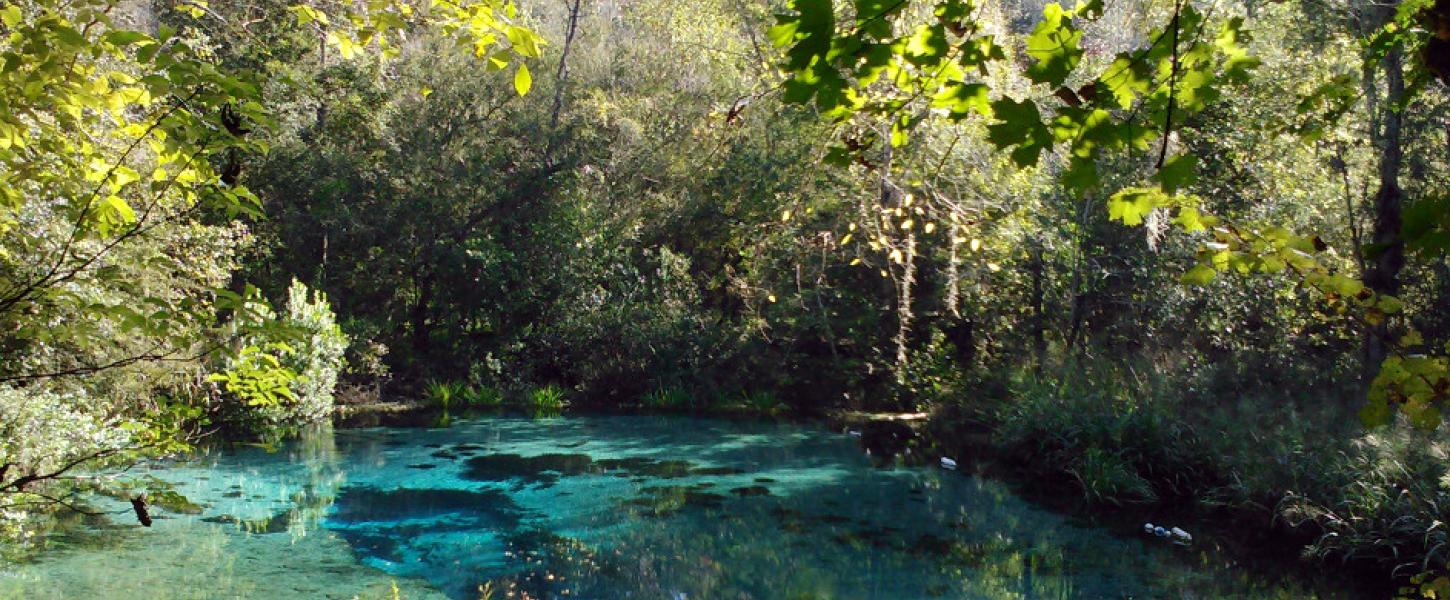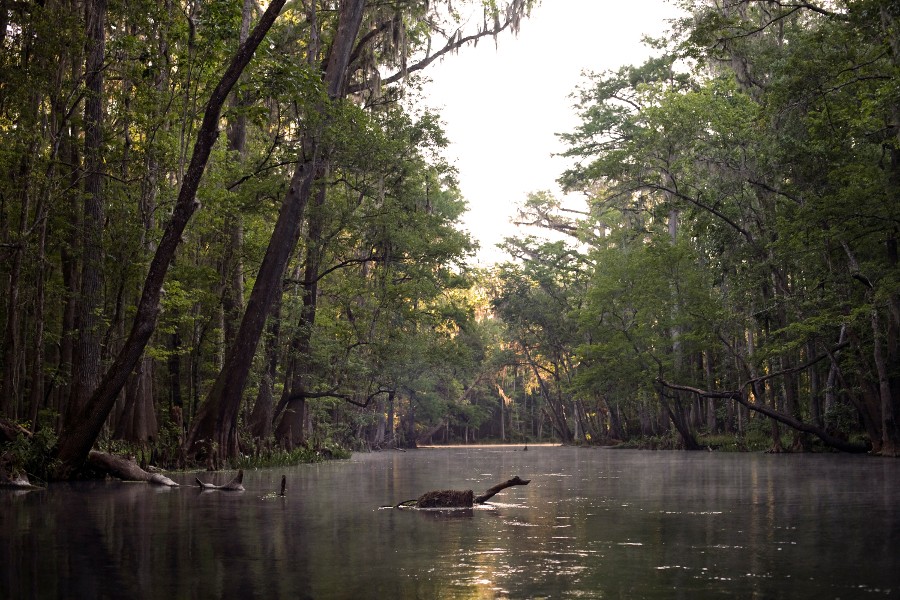
Springs of Ichetucknee

The striking clarity of the Ichetucknee River rate it as one of the best, if not the premier example of a spring-run stream in Florida. The park protects 3.5 miles of this cherished river, as well as its major springs and numerous seeps. The clear, cool spring water of the Ichetucknee River travels a couple of miles downstream before meeting the darker, tannic Santa Fe River.
For those fortunate enough to experience the sparkling spring-run itself on a blue-sky day, they will observe the sun’s rays illuminating the submerged aquatic vegetation, seemingly painted with nature’s many hues. These eelgrasses waving in the flow are a critical element of the underwater landscape. Countless turtles and stealthy gar weave their way through the river of grass; mullet jump out of the water while occasionally a manatee and her calf are spotted munching away.

Following the flow of the Ichetucknee River are eight major springs. The first of these is the stunningly picturesque Ichetucknee Headspring, clear and powerful.
Tucked into the alluvial forest is Cedar Headsprings, which get its name from several large cedar stumps - a clue to the area’s past logging activity.
Blue Hole is an apt name for the sapphire first-magnitude spring and the park’s most prominent aquatic karst feature, also called “The Jug” due to its unique shape. The Mission Springs Complex outflow is the second largest on the river - you’ll know it when you feel the flow of the water. Twisty live oak branches sweep out over Devil’s Eye Spring with its two large limestone vents and bright blue reflections, while stretches of wild rice and big sky vistas indicate that Grassy Hole Spring is near.
Mill Pond Spring once powered a historic gristmill, and Coffee Spring is home to the critically imperiled and endemic Ichetucknee siltsnail (Floridobia mica).
Together, these springs and additional seeps push out more than 200 million gallons of water a day. Now that’s power.

While marveling at these springs, a distraction may occur as a pop of red from a blooming cardinal flower, or the quick swoop of a swallow-tailed kite overhead. The absence of the hum of a motorboat or glow of a house is notable and welcome in this quiet and pristine landscape. This is ...the Real Florida.
Although protected, this remains a sensitive system that requires active, adaptive management. The Florida Department of Environmental Protection (DEP) is dedicated to preserving these natural resources. Along with protecting springs within the state park system, DEP monitors water statewide and establishes protections which will ensure its quality for generations.